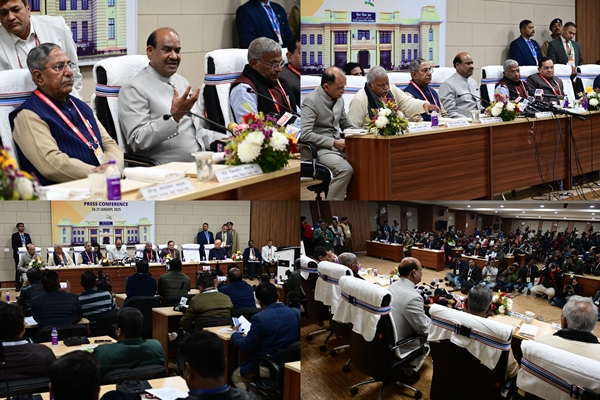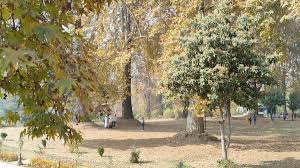Mount McKinley

- 22 Jan 2025
In News:
In a controversial move, President Donald Trump (2025) signed an executive order to rename Denali (North America’s highest peak) back to Mount McKinley, and also proposed renaming the Gulf of Mexico to the Gulf of America, citing the need to "honor American greatness."
About Denali / Mount McKinley:
Feature Description
Location Alaska Range, South-Central Alaska, USA
Height 20,310 feet (6,190 meters) – Highest in North America
Geology Giant granite block uplifted by tectonic activity ~60 million years ago
Glaciers Feeds major glaciers: Kahiltna, Muldrow, Peters, Ruth, Traleika
Tectonics Lies along the Denali Fault, a major right-lateral strike-slip fault
National Park Forms the core of Denali National Park and Preserve
Historical Background of the Name:
- Original Name: Denali, meaning “The High One” in the Athabascan language of the Koyukon people.
- 1897: Renamed Mount McKinley by a gold prospector in honor of President William McKinley (1897–1901).
- 1917: Official federal recognition with the creation of Mount McKinley National Park.
- 1980: Park renamed Denali National Park and Preserve; mountain's name remained McKinley federally.
- 2015: Obama administration officially renamed the peak Denali through the U.S. Department of the Interior.
- 2025: Trump issued executive order to revert the name to Mount McKinley, stating McKinley “deserves” the honor.
Rationale Behind Trump’s Renaming Order:
- Claims it honors McKinley’s legacy: economic growth, leadership in Spanish-American War, and tariff reforms.
- Declares Obama’s 2015 decision an “affront” to American heritage.
- Connects the move to his broader theme of “Restoring Names that Honor American Greatness.”
Opposition & Cultural Sensitivity:
- Alaska’s bipartisan leadership, including Senators Lisa Murkowski (R) and Scott Kawasaki (D), oppose the move.
- Indigenous groups maintain that Denali is the rightful and culturally authentic name.
- Critics argue it undermines native heritage and local identity.
Renaming the Gulf of Mexico to “Gulf of America”:
- Also part of Trump’s 2025 executive order.
- Geographic Facts:
- Borders the US, Mexico, and Cuba.
- Crucial to the US energy sector:
- 14% of US crude oil
- 5% of US natural gas
- 48% of refining capacity
- International Validity: The International Hydrographic Organization (IHO) allows local name usage but retains “Gulf of Mexico” in global records.
- Not binding on Mexico or Cuba.
International & Historical Parallels in Naming Disputes:
- Persian Gulf vs. Arabian Gulf (Iran vs. Arab states)
- Sea of Japan vs. East Sea (Japan vs. South Korea)
- South China Sea: Multiple nations claim different names and areas.
About the Denali Fault:
- Major strike-slip fault running through Alaska.
- Responsible for extensive tectonic movement and uplift of Denali.
- Evidence of horizontal displacement (~483 km) over millions of years.
- Marked the final suturing of tectonic plates in North American geological history.
Diamond Imprest Authorization (DIA) Scheme

- 22 Jan 2025
In News:
The Union Government, under the Foreign Trade Policy 2023, has introduced the Diamond Imprest Authorization (DIA) Scheme to enhance India’s competitiveness in the global diamond trade, promote exports, and protect employment, especially in the MSME sector.
Key Highlights:
Objectives:
- Boost value addition and export growth in the diamond sector.
- Support MSME exporters to compete globally.
- Retain India’s position as a global hub for diamond processing and exports.
- Mitigate recent challenges like export decline, job losses, and global demand shifts.
Key Features of the Scheme:
Feature Details
Type of Diamonds Allowed Natural cut and polished diamonds less than ¼ carat (25 cents)
Eligibility Exporters with Two Star Export House status and minimum $15 million annual exports
Export Obligation 10% value addition on imported diamonds
Duty Exemptions Exempts Basic Customs Duty, Anti-dumping Duty, Countervailing Duty, etc.
Effective Date April 1, 2025
Exclusion Lab-Grown Diamonds (LGDs) not covered
Monitoring Agency Gems and Jewellery Export Promotion Council (GJEPC)
Why the Scheme Was Introduced:
Challenges in the Diamond Sector:
- Global: Falling demand in US, Europe, China; rise in lab-grown diamonds.
- Domestic: High unsold inventory, rising operational costs, reduced credit flow, and high corporate tax.
- Employment Impact: Job losses in the diamond cutting and polishing segment.
International Context:
- Inspired by beneficiation policies in diamond-producing countries like Botswana and Namibia, which mandate local value addition.
Significance:
- Enhances India’s role in the global diamond value chain.
- Provides ease of doing business through duty relief.
- Promotes employment generation, especially for diamond assorters and processors.
- Facilitates inclusive growth by supporting MSMEs in a traditionally export-driven industry.
Way Forward:
- Regulate Lab-Grown Diamonds to prevent market distortion.
- Extend export credit period and consider tax exemptions for foreign diamond sellers.
- Ensure technology upgradation and skill training to sustain global leadership.
Closing the Women’s Health Gap
- 22 Jan 2025
In News:
The World Economic Forum (WEF), in collaboration with the McKinsey Health Institute, released the report titled “Blueprint to Close the Women’s Health Gap”, highlighting the economic and social benefits of addressing gender-based health disparities.
Key Insights from the Report:
Economic Potential:
- Closing the women’s health gap could contribute $400 billion to global GDP by 2040.
- Focusing on just three conditions—menopause, PMS, and migraine—could unlock $315 billion in productivity.
Health Disparity:
- Women experience 25% more years of poor health than men.
- Root causes include underrepresentation in research and sex-neutral clinical guidelines.
- Only 10% of trials on major conditions like ischemic heart disease and migraine include sex-disaggregated data.
Key Health Conditions Identified:
Lifespan Conditions:
- Maternal hypertensive disorders
- Postpartum hemorrhage
- Ischemic heart disease
- Cervical cancer
- Breast cancer
Health Span Conditions:
- Endometriosis
- Menopause
- Migraine
- Premenstrual syndrome (PMS)
Addressing these can add 2.5 healthy days per woman per year globally.
Women’s Health Impact Tracking (WHIT):
- A public digital platform by WEF and McKinsey.
- Tracks global health disparities.
- Offers data-driven insights to guide investment and policy decisions, especially for low- and middle-income countries which face 54% of the global women's health burden, yet host only 23% of related clinical trials.
Five Strategic Actions for Stakeholders:
- Count Women – Improve data collection specific to women’s health.
- Study Women – Boost research funding on women-centric health conditions.
- Care for Women – Create tailored clinical guidelines and protocols.
- Include All Women – Ensure equity for marginalized groups.
- Invest in Women – Finance innovative healthcare solutions and service delivery models.
One Nation, One Legislative Platform

- 22 Jan 2025
In News:
- The 85th AIPOC, held in Patna, Bihar, emphasized enhancing the effectiveness of legislative institutions through reforms in decorum, digitization, and public participation.
- A major outcome was the announcement of the One Nation, One Legislative Platform to digitally integrate legislative bodies across India.
All India Presiding Officers’ Conference (AIPOC):
- Established: 1921; first session held in Shimla.
- Role: Apex platform bringing together Presiding Officers of Parliament and State Legislatures.
- Objective: Strengthen democratic institutions by fostering cooperative federalism, legislative accountability, and improved law-making processes.
2025 Conference Highlights:
- Venue: Historic Bihar Legislature Premises, Patna.
- Key Themes:
- Reducing disruptions and maintaining decorum in legislative houses.
- Promoting qualitative debate and discussion.
- Observing the 75th year of the Constitution with participatory democratic celebrations.
- Resolutions Adopted:
- Formulation of internal code of conduct by political parties.
- Nationwide campaigns involving PRIs, urban bodies, students, NGOs, media, and more to celebrate democratic values.
One Nation, One Legislative Platform (ONOLP):
What It Is:
A national mission to create a unified digital ecosystem integrating the Parliament, state legislatures, and local bodies for better legislative coordination and public access.
Key Objectives:
- Real-Time Data Sharing: Seamless, up-to-date legislative information across institutions—proceedings, bills, debates, etc.
- Transparency & Accountability: Open access to deliberations enables citizen oversight and institutional accountability.
- Public Participation: User-friendly access encourages civic engagement in law-making and governance.
- AI & Tech Integration: Use of Artificial Intelligence for data analysis, decision support, and enhanced efficiency.
- Paperless Legislatures: Digitization of records to promote sustainability and reduce bureaucratic delays.
Implementation Support:
- Spearheaded by the Lok Sabha, with Speaker Om Birla announcing its completion by 2025.
- Includes the creation of a central portal for public and institutional use.
Chinar Trees

- 22 Jan 2025
In News:
The J&K Forest Department, in collaboration with the J&K Forest Research Institute (JKFRI), has launched a pioneering conservation initiative to digitally preserve the iconic Chinar trees (Platanus orientalis)—a vital part of Kashmir’s ecological and cultural heritage.
Significance of Chinar Trees:
- Locally known as Boonyi or Boueen, Chinar trees are deeply embedded in Kashmir’s cultural identity.
- These deciduous trees can grow up to 30 meters tall with a girth of 10–15 meters, and can live for over 600 years.
- They are known for their seasonal leaf color transformation—from green in summer to red, amber, and yellow in autumn.
- Notable specimens include Asia’s largest Chinar in Ganderbal and the oldest known Chinar (647 years) in Chattergam, Budgam.
Challenges to Chinar Survival:
- Urban expansion and habitat encroachment.
- Climate change, altering precipitation and temperature patterns.
- Illegal felling and timber exploitation.
- Increased susceptibility to pests and diseases.
Tree Aadhaar & Geo-Tagging Initiative:
- Over 28,500 Chinar trees have been geo-tagged and assigned unique Tree Aadhaar numbers from 2021 to 2023.
- Each tree is fitted with a QR-coded digital plate, enabling real-time access to:
- Tree location, height, girth, canopy dimensions
- Health status, ecological threats, and pest presence
- These plates are spring-mounted metal tags to prevent damage to the trees.
Conservation Goals & Future Plans:
- Digital Protection: Enables proactive monitoring and protection through a centralized database.
- Chinar Atlas: A comprehensive mapping of all Chinar trees in the region.
- Public Access Website: A dedicated digital portal is planned for broader access to Chinar data.
- Risk Assessment: Use of USG-based, non-invasive surveys to identify trees at risk without human interference.
- Emphasis on covering remote and restricted areas in future phases to ensure inclusivity in conservation.
